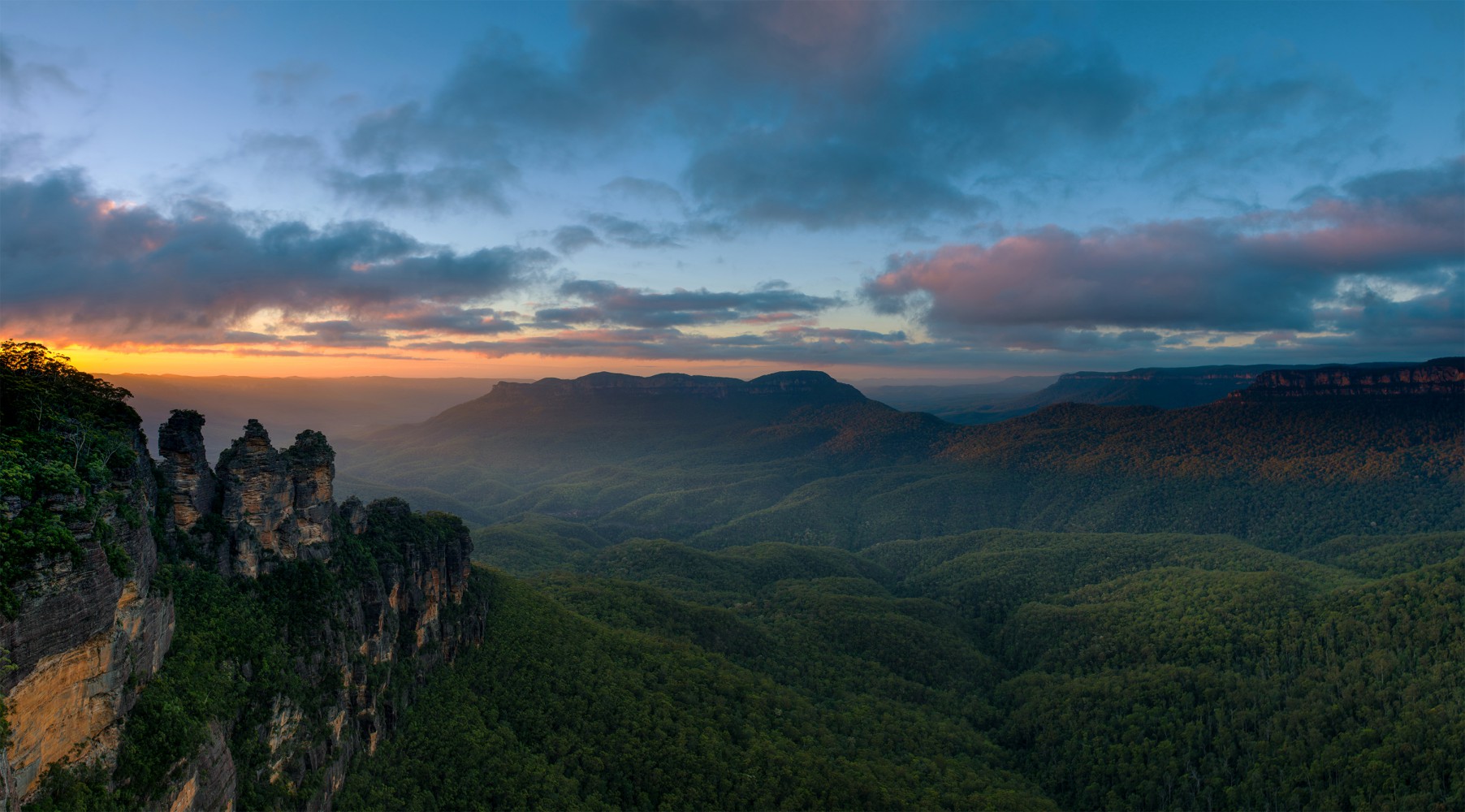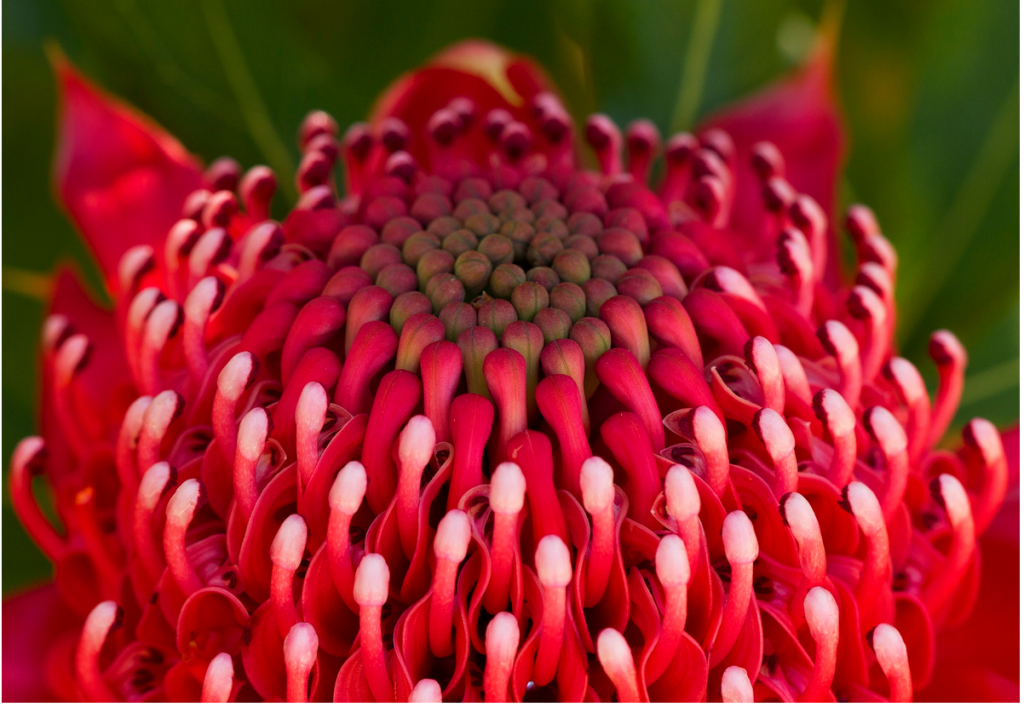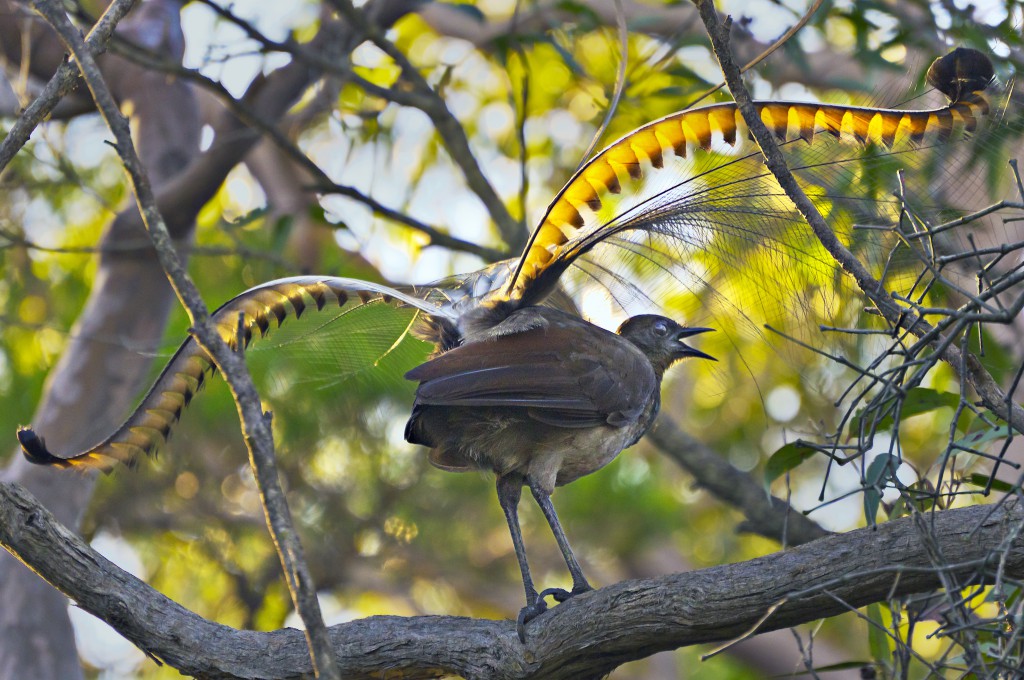Going Walkabout in Sydney’s Blue Mountains
The term ‘walkabout’ is synonymous with Australia in many travellers’ imaginations. It’s not surprising, then, to find a proliferation of activities identifying themselves as such, from bushwalking to city street outings, bus excursions and zoo tours.

Such experiences seem to have taken on the connotations of physical exploration involved with the traditional walkabout — perhaps with a vague association with native flora and fauna, or Aboriginal rock art — while disregarding its crucial function of facilitating self-exploration, spiritual transformation and cultural initiation through a deeper connection with the natural-cultural environment. It’s also disheartening to see that even those operators who tout the importance of Aboriginal knowledge in their promotional materials tend not to have taken the steps to build and maintain the community connections that would actually allow for indigenous guides to share that knowledge. In these ways, the Australian tourism industry as a whole tends to obfuscate the significance of the walkabout, distorting this cultural form to its own ends.
Fortunately, Sydney’s Blue Mountains possess a treasure in Evan Yanna Muru, the owner-operator of Aboriginal Blue Mountains Walkabout. On first impression, it seems the 53-year-old must have found the fountain of youth in these mountains, but through the day we will learn that his secrets to spiritual and physical well-being are grounded in his strong practice of Aboriginal culture. This one-day tour is just a taste of the walkabout experience, but will provide us with the basic tools to continue practicing the culture, and reaping the benefits, if we so desire. Failing that, it will at the very least provide a different point of view on the iconic Blue Mountains — usually experienced as a hazy mass from the distance, or via clearly demarcated tracks leading to lookouts and other sites chosen for scenic, rather than spiritual or cultural significance.

On meeting at the Faulconbridge train station, we stroll down the street and take a seat on a log for introductions. We each share our name, where we’re from, and what we are hoping to get out of the experience. I have come to the walkabout with very few preconceptions: really, I just want to see what the indigenous form of walkabout tourism looks like, and what these traditions might be able to teach us about spirituality and health. The other four participants hail from the US, Japan and the Netherlands, and motivations range from personal development to academic research, to one woman who just loves hiking. For his part, Evan, an Aboriginal born from Darug land (the local language group), wishes to share how the old ways can be integrated into modern life, in order to relieve some of the problems we all face as a result of our current mode of living.
We start down a steeper section of the path, shuffling along practicing our ‘penguin walk’. We soon pause by a bush, and are instructed to pick the tiny leaves, crush them in our hands, and smell. The herbal, lemony scent is refreshing, and we learn this plant is a natural antiseptic. Right next door, we pluck leaves from another tree, rolling these up and inserting them in our nostrils to clear our airways. Returning to walking technique, Evan suggests that we walk as gently as possible, and try to feel the ground through the soles of our shoes: in addition to making us mindful of this experience, this practice is respectful to the environment, will mean we don’t frighten off so much wildlife with our heavy steps, and is even better for our cartilage. I’m sold. Breathing fresh, minty air, on we go, heading off the main trail and following the lead of the person in front of us, each warning the person behind them of obstacles, or pointing out interesting sights. Our education about bush medicine and tucker continues: over the course of the day we try starchy strands of grass, sour purple berries, and my favourite: ‘bush chewing gum’, a licoricey leaf.
Coming out of the bush, we cross a stream and take a rest on some rocks in dappled sunlight. Here, following a discussion of the importance in Aboriginal culture of establishing a circadian rhythm around the movements of the sun, Evan tells us about the Dreaming, which he describes as “the natural, cyclic, dynamic and creative spirit that is shared by everything in existence, including the past, present, and future.” This encompasses a very individual responsibility to care for certain aspects of our Mother Earth, or Nungeena, as well as an unbreakable interconnectedness with everything and everyone else, represented by the overarching nature of Baiamee, Father Sky. Evan emphasises the importance of physical feeling and imagination in connecting with the Dreaming, and gives us some ‘rituals’ to practice that remind me very much of other philosophies around sensation and mindfulness, such as Vipassana meditation. Although each culture has its own ways of coming to it, there does seem to be a consistent theme that emerges, of both connecting with the outside world and evolving internally by the way we mentally interact with physical sensations.

Next, Evan shows us some rock carvings in the stream bed, telling us their story before inviting us to look closely. Such carvings mark a sacred site that form part of a songline, a Dreaming story that is sung and danced from site to site during the traditional walkabout. We learn about the ancestral beings who brought the lore of observing, connecting and sharing with all of nature to the Aboriginal people, and the positive effects this had on society. The conversation turns to physical as well as spiritual nourishment, and over lunch we discuss the ill-effects of our modern diet compared to the natural habits of the ancestors, and the difficulties in knowing what the ‘right thing’ is in regard to this — each spontaneously sharing our respective struggles with coffee, bread, dairy and the like. After lunch, we practice some painting, with Evan modelling designs in the sand for us to paint on bark. With a small stick I carefully construct a squiggly ochre snake. The ‘paint’ dries, and it is time to continue our walkabout.
Heading down the valley, we criss-cross the stream, making good use of our ‘penguin walk’ on the occasional slimy rock, and trying to remember our mindful stepping strategy the rest of the time. We come across further sacred sites along the way — a cave of pink and ochre swirls, the structure of the rock above recalling more of a coral formation than a mountain landscape; a large rock with two round eyes seemingly peeking out at us — and we learn their stories and one of their dances. We’re also treated to some wildlife — an owl flies out of the cave and perches nearby, and we’re transfixed by the neon orange and blue reflects of a yabby just below the surface of the stream. The sound of rushing water that has accompanied us all the way down increases in volume as we approach Clarinda Falls, back on the trail now. Although the spot is scenic enough on its own, Evan’s recounting of an appropriate Dreaming story, which results in the creation of the lyrebird by Mother Earth, provides striking context. We explore the falls: I let the cold water drip in great drops on my head, and squash the softened ochre that drips from the walls of the caves between my fingers, before rinsing them in the falls.
Standing on the rocks, Evan and I return to the idea of the old versus the new. I have been surprised to find such a strong link in this culture between the environmental, the spiritual, and the physical — each informs the others. And that is the key: practicing these old ways represents not just a win-win situation, but a “win-win-win-win-win,” as Evan puts it. Many of his people have lost these habits in the modern world, he says — and to look back and rediscover them is the way forward. But why stop there? This culture has advantages for everyone who struggles in our contemporary society. This is not to say we reject the modern world completely, but that we look to more grounded models of the past to manage it, and to be at our best within it. As we climb the steep trek to our final destination — one last physical challenge for the day — I spot a lyrebird with its peacock-like plumage waving its way through the bush, and feel a flash of affinity that could only come from the Dreaming.
